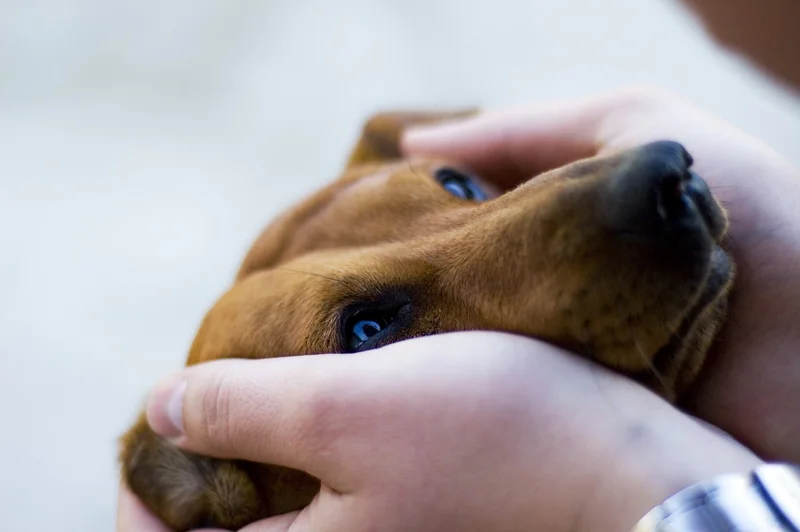How dogs see: interesting facts about vision and color perception by our pe

Photo source: 123rf.com
4 facts about dog vision that you might not know.
A dog's gaze can be very expressive. That puppy dog look, which persists at any age, could cost you your last bite of your sandwich. However, do you know how well and far your dog can see? How does she perceive colors and people? There are quite a few myths about this. In this article we will try to separate reality from fiction.
1. Dogs have poor distance vision.
According to Psychology Today, dogs have 20/75 vision. This means that at a distance of 6.1 meters from an object they see with the same level of detail as a person with perfect vision who could see at a distance of 22.9 meters. This means that dogs have poor long-distance vision: they are quite nearsighted. However, dogs have highly developed other senses to compensate for this deficiency. In particular, their hearing and smell are much sharper than ours.
The dog looks into the distance. Photo source: 123rf.com
2. Dogs see in flowers.
Many people believe that dogs see as if they were watching an old black and white television. However, dogs' vision is truly colored. They see the world in shades of blue, yellow, green and gray in addition to white and black. The reason they don't see color the way we do is due to the color receptor cells in the eye.
These cells are called cones and are located on the retina at the back of the eye. Humans have three types of cones, and each is sensitive to a specific color of light (red, blue, and green). Dogs only have two types: one for yellow and one for blue. This is why, although they see in colors, they perceive fewer colors than we do.
Dog. Photo source: 123rf.com
3. Dogs have better peripheral vision than humans.
Peripheral vision is what your eyes perceive to the sides when you look straight ahead. And it is better developed in dogs than in people, which makes them good hunters and watchdogs. While humans have a field of vision of about 180 degrees, dogs have a much wider field of vision. How much depends on the dog, but on average their field of vision is about 250 degrees.
In general, the longer and thinner their snout, the larger their field of vision. Breeds with a short muzzle, like the pug, for example, have narrower fields of vision. And breeds with a long, thin muzzle, such as the greyhound, have a wider field of vision. In any case, any dog's field of vision is better than ours. So when your dog runs towards something or someone we can't see, you can only blame it on your weak field of vision. Dogs' extended field of vision is inherited from their wild ancestors. Nature is wise!
Happy dog. Photo source: 123rf.com
4. Dogs have excellent night vision.
Good night vision is usually associated with cats. However, the reality is that we can only envy dogs’ night vision. This has to do with the structure of their eyes and some additional characteristics that we humans simply don't have.
Dogs have huge pupils. This, in addition to making them even more attractive, allows more light to enter the eyes. This light is absorbed by the so-called rod cells located on the retina, along with the cones we talked about earlier. We humans have it too, but dogs have a lot more of it. This allows them to receive stimuli even in very low light and therefore allows them to see much better in the dark.
Additionally, a dog's eyes have a structure called the tapetum lucidum, which is located behind the retina. It is a kind of mirror that reflects incoming light so that it passes through the retina again, giving it a second chance to detect light when there is little available. The reflection tapetum lucidum is the sparkle that we see in a dog's eyes when some light illuminates them in the dark. All of these special characteristics combine to give your dog the ability to cross a dark living room without clinging to anything, as can happen to us.
Dog. Photo source: 123rf.com
Summarizing...
Your dog can perceive many more colors than just black and white. Distant objects appear more blurry, but she has a very wide field of view and the darkness will not interfere with her nighttime activities. Dog vision has some limitations, but at the same time, your pet can detect things that we humans cannot. The next time you look into your dog's eyes, you will already know how and what he sees.